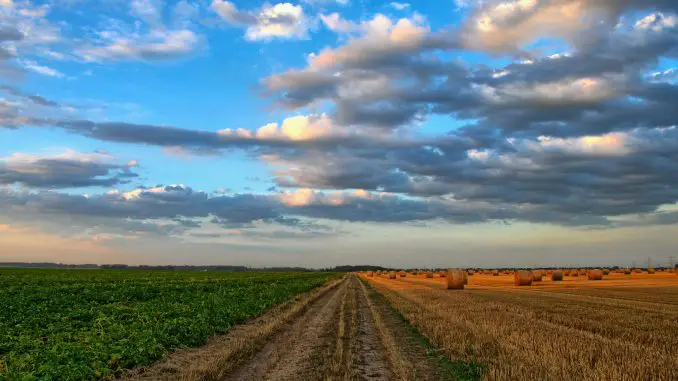
In a few decades, the temperature has increased globally as a result of rising levels of greenhouse gases in the atmosphere. Higher temperatures mean that agriculture in many places around the world has to adapt.
There is great potential for agriculture in the future if we manage to cope with climate change. A longer growing season in the more norther parts of thr world, opportunities to grow other crops, higher carbon dioxide levels and opportunities for a longer stay in agricultural animals are examples of positive aspects that follow a changing climate. At the same time, the harvest conditions can deteriorate and there are risks and challenges with increased and decreased precipitation during different seasons, increased risks with diseases and pests and heat stress in plants and animals.
It gets hotter, softer and drier at the same time
In the north, we are favored from a global perspective. Over the course of a hundred years, Northern Europe will still be a relatively comfortable place to live, although the temperature is raised, unlike many other parts of the world, where the lack of water, in particular, will make life and the conditions for cultivation very difficult.
Climate change in the coming decades will also affect the conditions of agriculture. The weather gets warmer and richer on precipitation. The variation in precipitation between summer and winter is also expected to increase in large parts of the country. The warmer summers lead to increased evaporation, which means that the supply of water during the summer will be lower despite increased rainfall during the year. Extreme weather events such as rainfall, floods, heatwaves and dry periods are also expected to increase in a changing climate.
It is increasingly important to read the seasons
However, the pace of climate change is no higher than it is possible to make a gradual adaptation to a warmer climate with changing precipitation patterns. The critical factor in the future may not be light and heat in the spring, but instead that the soil carries and has the right moisture and that the crop has time to establish itself well before the spring drought sets in.
The conditions for harvesting may look different. At the same time as more harvests become involved in the long term, harvesting conditions may be more difficult in some years. New crops and changed cultivation methods regarding, for example, timing of sowing, harvesting, fertilization, irrigation needs and control are becoming relevant. As farmers, it becomes even more important to follow the weather trend in the individual year and to take measures for a long-term adjustment. For buildings and infrastructure that will remain and function for a long time, future climate change is important to consider.
New challenges
Agriculture will face new challenges. At the same time as reducing the burden on the sea and other ecosystems, for example, agriculture must be able to adapt cultivation and production to a changing climate.
Online, you can find updated information on how the climate will change.
Leave a Reply